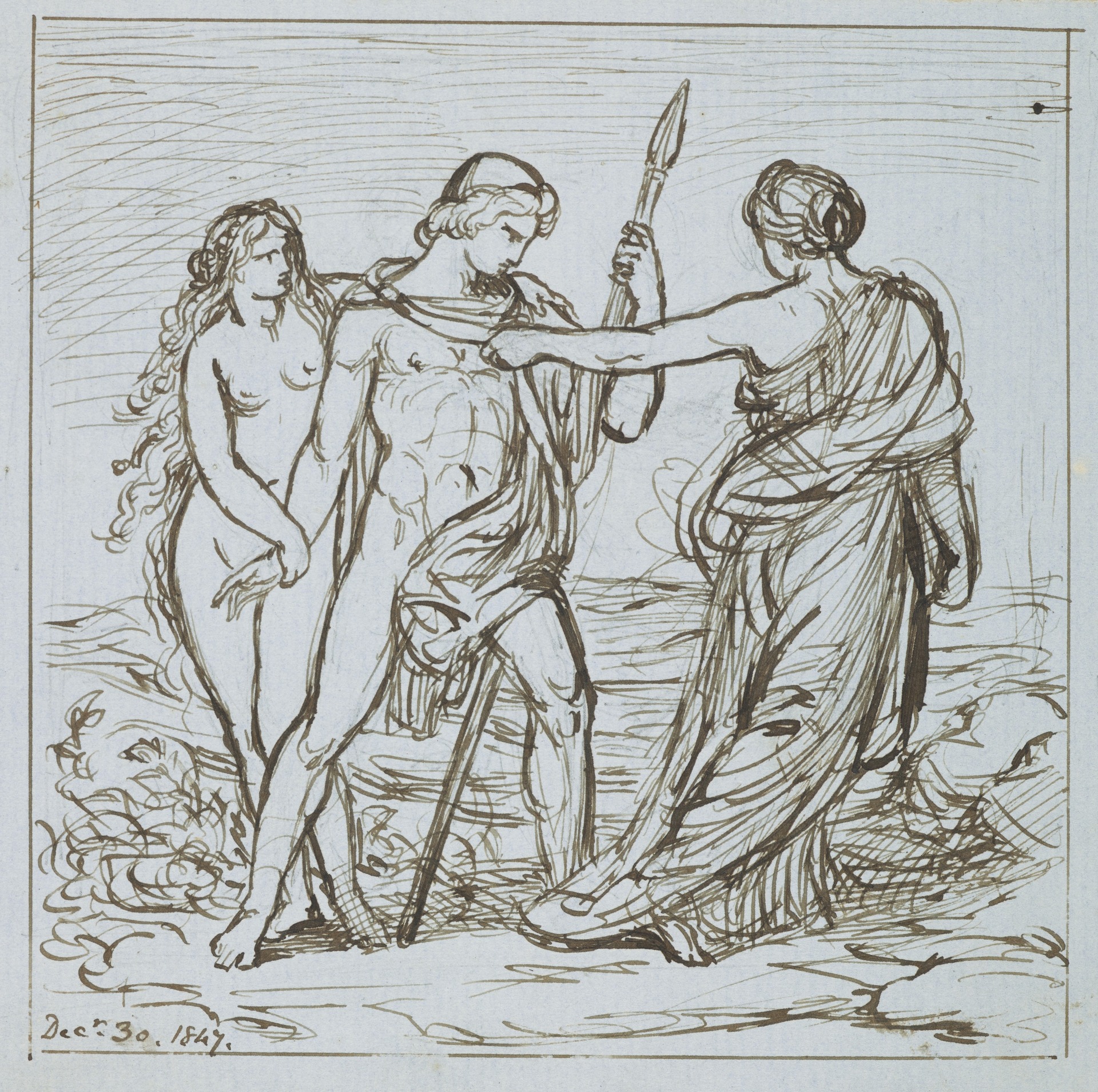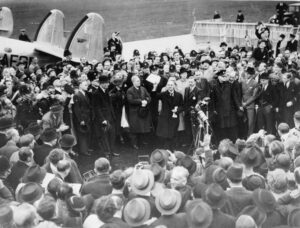Worldview Failures can be Catastrophic

Worldview Failures can be Catastrophic
Family leaders with great responsibility for the successful future of their relations and the resources under their care are prudent to periodically review assumptions about the state of the world and attendant plans for assets and activities. Worldview is the term for an outlook that aggregates our important assumptions about the world in which we live, and here we will take a look at worldviews, which have been the subject of human examination since the deepest antiquity.
Let’s pick up a comedy The Wealth Gods, written by Plutoi in 426BC.
In ancient Greece, legend held that in an even older time, the world was ruled by the Titans, an Age of extravagant prosperity with the wealth, happiness and fate of humans equitable and fair. Those times receded when Zeus, the King of the Olympian Gods, defeated the Titans. Under the new rule of Zeus, humans were allowed free will and it came to pass that by their exertions some increased their wealth, while through sloth that of others decreased. But the legend taught that by-and-by Zeus was overthrown by the resurgent Titans and the Gods of Wealth returned. They began to reorder the world, taking from some and giving to others, in accordance with the legendary Golden Age of equal prosperity and wealth for all.
Plays in classical Greece were presented to prompt questions and catalyze thoughtful inquiry. With high confidence, we suggest certain questions immediately came to mind:
Between the groups of humans, those who either increased their wealth or those who saw its decrease, which acted more nobly?
And which group did the Wealth God’s treat more fairly in the rebalancing?
What type of world rewards the foolish while punishing the practical?
Is there a position guaranteed against fundamental change?
Fundamental change is the lesson of history. Almost invariably, the world changes, and one understanding of reality, one worldview that seemed to capture the essence of the former age, suddenly fails to explain the new world. Very often, the changes, and continued adherence to the incorrect worldview can bring great loss, even catastrophe.
A failed worldview can be embraced by a single person. Can anyone remember Hiroo Onoda? He was the Imperial Japanese Army Intelligence officer that did not surrender in 1945. In fact he held out in the Philippines until his former commanding officer arrived to relieve him, 29 years later, in 1974.

And a worldview can be accepted by large groups of sophisticated people over long periods of time. The Order of the Golden Dawn was established in 1888 in Britain following the discovery of documents known as the Cipher Manuscripts. These were written in English using the Trithemius Cipher, dating to 1508 and the world’s first book on cryptology. The decoded message led to a German countess who professed the ability to contact supernatural beings described as the Secret Chiefs, authorities on the occult sciences. “Our origins are Egyptian and Brahamanic derived from the mysteries of the Eleusis and Samothrace, the Magi of Persia, the Pythagoreans and the Arabs.”
The promise of spiritual transformation at a time of cultural turmoil influenced many leading figures to seek esoteric knowledge. There developed a secret brotherhood of alchemists and sages who were preparing to transform the arts, sciences, religion and the political and intellectual landscape of the West.
A temple in London was followed by one in Edinburgh and then Paris. It is reported that in the next decade the Order counted hundreds of members from Victorian and Parisian society including several prominent intellectuals and celebrities. Eventually internal relations became strained as members desired to contact the Secret Chiefs directly without the ritual intercession of their superiors in the Order. Splinters groups broke off, a Chicago temple was established at the turn of the century and there were reportedly three American temples by the First World War. A temple in New Zealand was active until 1978. Harmless perhaps, except for the ruined relationships, dissipated wealth, distraction and opportunity cost to members and their families.
The family of modern history perhaps most famously reduced by adherence to the incorrect worldview is the Romanovs. The House of Romanov had ruled Russia for three centuries from 1613 until 1917 when Tsar Nicholas abdicated following 8 days of violent unrest known as the February Revolution – a spontaneous uprising of malcontent with no real leadership or plan.
On February 26, the Chairman of the Duma telegrammed the Tsar from Petrograd, “The situation is serious. The capital is in a state of anarchy. The Government is paralyzed. Transport service and the supply of food and fuel have become completely disrupted. General discontent is growing … There must be no delay. Any procrastination is tantamount to death.”
Two days later, the Tsar expressed annoyance, saying the Minister’s message was full of overblown nonsense to which he “did not deign even to reply.” In another three days, the government and army had abandoned the Tsar forcing the abdication of the throne, the Romanov Family placed into ‘protective custody’ by the Provisional Government. Tsar Nicholas II, the Russian Imperial Romanov Family and 18 other members of the Romanov dynasty were murdered in the following anarchic chaos of civil collapse. The ruling family and government of 300 years had lost the confidence of the people in a fortnight, and then was gone.

One could question today, what the passage of 100 years and the sacrifice of as many as 60 million Russians to the cause has done for the “rule of the proletariat” and the creation of the “workers paradise” for the betterment of the lives of the people?
Let’s finally review two more important examples of failed worldviews of the 20th century:
– one objective and one subjective;
– one from science and one from human affairs;
– one the failure of which threatened our existence at the time; and
– one the misreading of which threatens our existence today.
“Peace for our Time.” The year 1938 was in many ways one of excitement, achievement and promise. Howard Hughes set a new Round the World Flight Record of 3 days and 19 hours. Oil was discovered in Saudi Arabia. Congress passed the Fair Labor Standards Act establishing a minimum wage and 44 hour work week. Orson Wells delivered his famous radio broadcast War of the Worlds. Seabiscuit beat War Admiral at Pimlico and Joe Louis knocked out Max Schmeling in the 1st Round at Yankee Stadium.
The RMS Queen Mary set the new world record for fastest passenger liner crossing of the Atlantic. The National Foundation for Infantile Paralysis March of Dimes was founded. Enrico Firmi won the Nobel Prize in Physics for the discovery of nuclear fission and comic uber hero Superman made his first published appearance. Born that year were Evel Kneivel, Ted Turner, Kenny Rogers, Bernard Madoff and Manual Noriega. New innovations included the ball point pen, teflon and nylon and with the first nylon toothbrushes hitting the market, people drank a new freeze dried coffee called Nescafe.
The Theory of Investment Value was published by Harvard Professor John Burr Williams, in which he developed the now classic dividend discount model for determining intrinsic value, called the most authoritative work on how to value financial assets. California beat Alabama in the Rose Bowl 13-0 and Time Magazine named German Chancellor Adolf Hitler ‘Man of the Year” in its annual Cover feature.
It was also the year of the Munich Agreement, by which Britain, France and Italy agreed to support the German armed annexation of Austria and occupation of the Sudetenland region of Czechoslovakia in return for Hitler’s promise of no further military expansion in Europe.
In September 1938 British Prime Minister Neville Chamberlain returned to London and rejoiced.
“My good friends, for the second time in our history a British Prime Minister has returned from Germany bringing peace with honour. I believe it is peace for our time!”

But was it? Possessing an alternate view, Winston Churchill wrote that, “England has been offered a choice between war and shame. She has chosen shame, and will get war.” Indeed 1939 and 1940 saw Hitler overrun in rapid succession, Czechoslovakia, Poland, Denmark, Norway, Holland, Belgium and then, in June 1940, France surrendered to Nazi Germany.
In his June 1940 speech to the House of Commons, newly appointed Prime Minister Winston Churchill said, “The battle of France is over. I expect that the Battle of Britain is about to begin. Upon this battle depends the survival of Christian civilization.”
For the British and Western World, the view of enduring peace obscured the near-term reality of fighting a war to avoid total destruction.

For our other example of a worldview reversal we travel back to 1915 and Albert Einstein’s presentation to the Prussian Academy of Science of his Field Equations that form the basis of his General Theory of Relativity. By 1917 Einstein was ready to apply his theory to the entire universe, establishing the gravitational foundation of modern physics.
Einstein’s model excited great interest among other physicists and mathematicians, and investigation soon indicated that the application of the general theory strongly suggested an expanding, rather than a static universe, as was the commonly held view. Even the intellect of one-in-ten-million was not immune to philosophical bias and, understanding that an expanding universe had to have a beginning, a concept of cosmic creation unsatisfactory to him, Einstein inserted a “cosmological constant” into his equations to “fix” the state of the universe.
Continued scientific study saw Edwin Hubble in 1929 provide empirical evidence from his telescope that the universe is indeed expanding, which suggests a cosmic beginning, the common understanding of which today is the Big Bang – when space, time and matter originated from nothing. Today it is inescapable that the commonly accepted scientific explanation of the origin of the universe bears striking similarities with Theistic traditions – a God of Creation.
Einstein, the name iconic for Genius, the man revered for discovering and changing how modern science understands gravity in the cosmos, the man that might have also been known for discovering the expanding nature of the Universe, instead was led to folly by his predisposition against a created universe, and later called his cosmological constant the ‘greatest blunder of his career.’
The commonly accepted term explaining the change from the usefulness of one worldview to another it paradigm shift. The term originated with the 1962 publication of The Structure of Scientific Revolutions by Thomas Kuhn of U.C. Berkeley. Kuhn’s work sought to explain the historical advancement of science, arguing that progress was not evolutionary but rather revolutionary. According to Kuhn, a distinct set of concepts describing and defining a subject is a paradigm. The predominant paradigm is the one most widely accepted at any given time, defining our world and informing how accordingly, we order our affairs. Critically, paradigm shifts can and do occur over time. A paradigm shift is a revolutionary change in the customary way of looking at things, the adoption of an alternate worldview and corresponding responses, if you will. Classic examples are the shift from the Ptolemiac to Copernican cosmology, when the Earth became a planet orbiting the sun rather than the center of the universe, and the shift from Newtonian inter-body gravity to Einstein’s curved spacetime in General Relativity. Consideration of Paradigm is appropriate for us as we progress to our conclusion because:
-
- a given paradigm describes the state of the world only imperfectly, and therefore, as it is not certain, requires a degree of faith;
-
- according to the originator of the term, a Paradigm Shift is an entirely new and comprehensive way of seeing the world, very much like a religious conversion; and,
-
- of course, no matter how strong the faith in a given paradigm, if the paradigm is far from a perfect explanation for reality, it will engender a great deal of risk.
Risk it seems is present with any paradigm seeking to explain today’s world, and is amplified when seeking to explain even the near future. Alvin Toffler argued in 1980’s The Third Wave that people approach the future in one of three ways:
1. they don’t consider it at all;
2. they believed it will be the same as it is today;
3. they contemplate what and how things might change, plan and act accordingly.
We are interested in understanding the paradigm that is the closest possible fit for the reality of our world, today and tomorrow, the one with the least relative risk that can guide our plans and activities. Professor Kuhn wrote that paradigm shifts are “first discovered by anomalies that don’t fit the accepted paradigm.”
Our Way of Life, which is responsible for all we have and necessary for all we want to preserve and pass on to future generations, features as its’ foundations Christianity, a Constitutional Democratic Republic and free market Capitalism. We observe with increasing regularity and intensity “anomalies that don’t fit the accepted paradigm” whether disrupting faith, government or commerce. We identify indications of an accelerating shift from the predominant paradigm. In the history of the world, only one true paradigm has afforded comfort for today, tomorrow and forever.
Scotus
photo credit: Sir Joseph Noel Paton, Hercules Between Vice & Virtue, The National Galleries of Scotland
